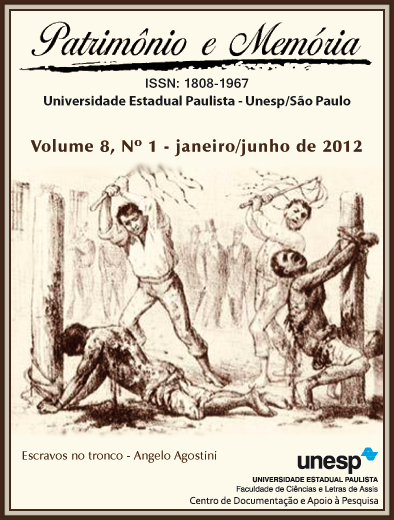The readership of caricatures in the Brazilian Belle Époque
the case of the illustrated magazine Careta (1908-1922)
Keywords:
Illustrated magazines, Caricature, History of the Press in Brazil, Careta (magazine)Abstract
This study focuses on the readership of the Brazilian illustrated humour magazine, Careta, throughout its first fourteen years (1908-1922). The intention is to place Careta within its national and international context whilst addressing some of the magazine's historical aspects. Moreover, the study will shed light on the peculiarities of this important publication by comparing and contrasting it with two other magazines of the time (O Malho and FonFon!) from Rio de Janeiro. It will be argued that Careta is one of the first examples of a cheap, well-printed magazine reaching a large nationwide and international readership on a regular basis.
References
DIMAS, Antonio. Bilac, jornalista: crônicas. v.2. São Paulo: Imprensa Oficial, 2006.
CARETA. Rio de Janeiro: Editora Kósmos, 1908. Retrieved from <http://objdigital.bn.br/acervo_digital/div_periodicos/careta/careta_anos.htm> on 10 December 2011.
COTRIM, Álvaro. J. Carlos: Época, vida, obra. Rio de Janeiro: Nova Fronteira, 1985.
DIÁRIO OFICIAL[DOS] ESTADOS UNIDOS DO BRASIL. Rio de Janeiro: Imprensa Nacional, 1896, 1907, 1918, 1919. Retrieved from on 1 December 2011.
HOUAISS, Antônio.Dicionário Houaiss da língua portuguesa. Rio de Janeiro: Objetiva, 2004.
FON-FON! Rio de Janeiro: Kósmos, 1907. Retrieved from <http://objdigital.bn.br/acervo_digital/div_periodicos/fonfon/fonfon_anos.htm> on 15 December 2011.
JANIK, Vicki K. Introduction. In: JANIK, Vicki K (ed.) Fools and Jesters in Literature, Art, and History. A Bio-Bibliographical Sourcebook. London: Greenwood Press, 1998.
LIMA, Herman. História da caricatura no Brasil. v.1. Rio de Janeiro: J. Olympio, 1963.
LLOYD, Reginald. Impressions of Brazil. London: Lloyd's Greater Britain Publishing Company, 1913.
LOREDANO, Cássio. O bonde e a linha: um perfil de J. Carlos. São Paulo: Capivara, 2002.
LOBATO, Monteiro. A caricatura no Brasil. In: LOBATO, Monteiro. Idéias de Jéca Tatu. Obras completas, v. 4: São Paulo: Brasiliense, 1964. p. 3-22.
LUSTOSA, Isabel.The Art of J. Carlos.The Journal of Decorative and Propaganda Arts, 21 (Brazil Theme Issue), p. 108-25, 1995. Florida International University. Retrieved from on 15 July 2011
MENEZES, Raymundo de. Bastos Tigre e a Belle Époque. Rio de Janeiro: Edart. Coleção Visão do Brasil, 1966.
MOTT, Frank Luther. A history of American magazines, 1741-1930, v. 3, Belknap Press of Harvard University Press, 1967.
NEEDELL, Jeffrey. A tropical belle époque: elite culture and society in turn-of-the-century. Rio de Janeiro. Cambridge: Cambridge University Press, 1987.
O MALHO. Rio de Janeiro: O Malho S.A., 1902. Retrieved from on 12 November 2011.
ROSA, Ferreira da. Rio de Janeiro. Rio de Janeiro: Ed. Oficial da Prefeitura. Retrieved from on 10 October 2011.
SOBRAL, Julieta. O desenhista invisível. Rio de Janeiro: Folha Seca, 2007.
SODRÉ, Nélson Werneck. História da imprensa no Brasil. 4 ed. Rio de Janeiro: Mauad, 1999.
VELLOSO, Mônica. As distintas retóricas do moderno. In: OLIVEIRA, Claudia. et al. O moderno em revistas: representações do Rio de Janeiro de 1890 a 1930. Rio de Janeiro: Garamond, 2010. p. 43-110.
STIEL, Waldemar. História do Transporte Urbano no Brasil. Brasília: Editora Pini, 1984.
Downloads
Published
How to Cite
Issue
Section
License
Copyright (c) 2012 Patrimônio e Memória

This work is licensed under a Creative Commons Attribution 4.0 International License.
All the content of the journal, except where noted, is licensed under a Creative Commons BY attribution license.


